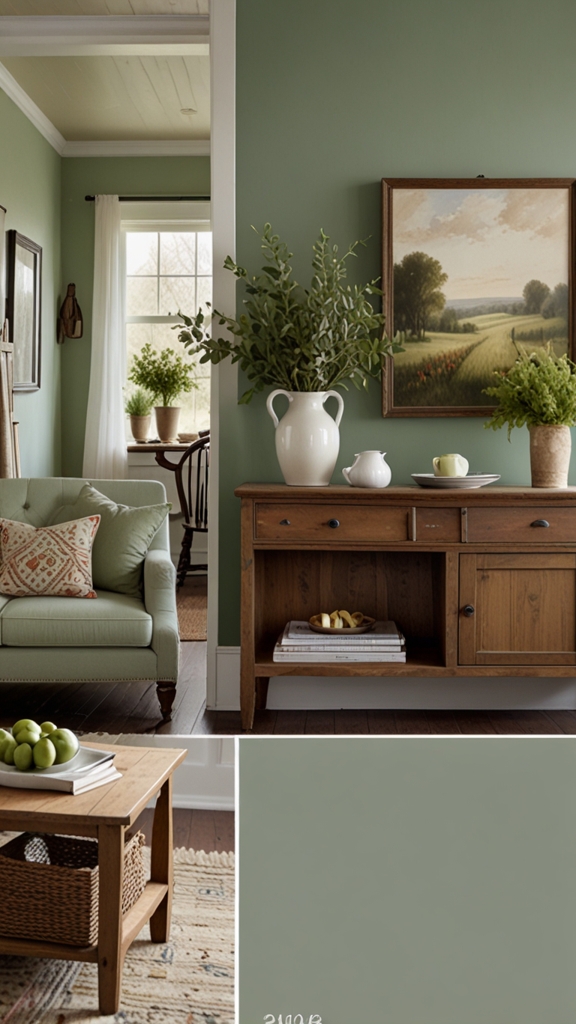Explore the top color schemes for a farmhouse-inspired living room! Embrace the charm of rustic décor with these daily interior designer routine tips.

The best color schemes for a farmhouse-inspired living room include warm neutrals like beige, ivory, and cream, as well as earthy tones such as sage green, navy blue, and mustard yellow.

These colors evoke a cozy and inviting atmosphere, which is perfect for a relaxed farmhouse style.
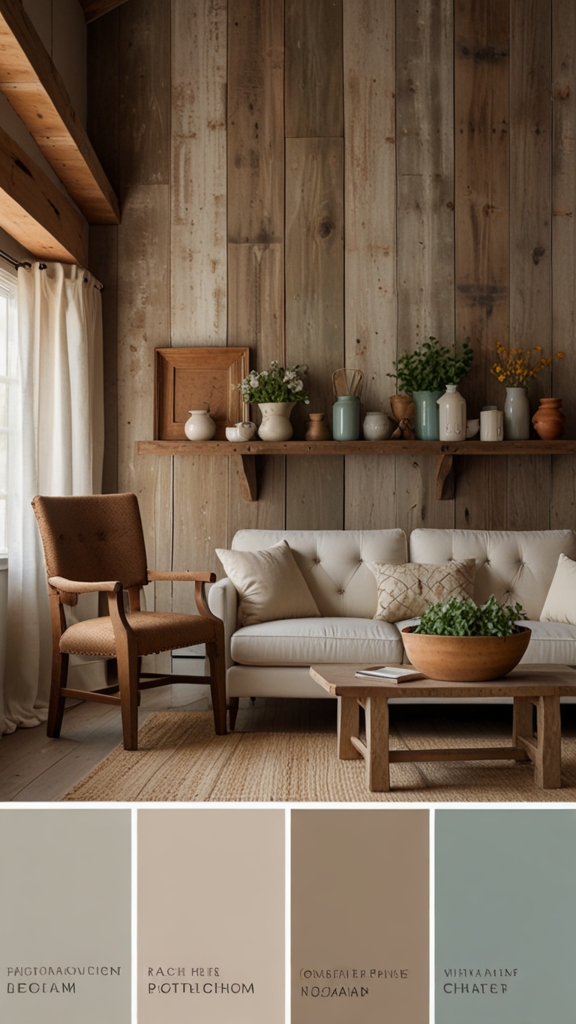
My Lovely Spring Paint for 2025
Ready for a Spring Makeover? Explore the Freshest 2025 Paint Trends!
White Sage/Green SW Pistachio green Soft blue Honeysweet/Orange Pink Sugar Sage Tint BMAs an Amazon Associate, I may earn a commission from qualifying purchases at no extra cost to you.
To create a cohesive look, consider using a mix of textures like wood, metal, and textured fabrics. Incorporating vintage pieces and rustic accents can further enhance the farmhouse vibe.

When decorating your living room, focus on creating a comfortable and functional space that reflects your personal style while maintaining a timeless appeal.
How can I incorporate neutral colors into my farmhouse-inspired living room color scheme?

My fAV Spring DECOR for 2025
Discover Spring’s Best 2025 Decor Combinations – Perfect for Any Room!
Oversized Indoor Plants White Curved Sofas Rugs BOH Brown Cream Moroccan Hype Boho Rug Outdoor Patio Furniture Sets Topfinel Pillow CoversAs an Amazon Associate, I may earn a commission from qualifying purchases at no extra cost to you.
Incorporating neutral colors into your farmhouse-inspired living room color scheme is essential to achieve that cozy and rustic look. Here are some tips to help you do this:
- Start with a neutral base: Choose elements like walls, large furniture pieces, and flooring in shades of white, beige, cream, gray, or taupe.
- Introduce textures: To prevent a neutral color scheme from feeling flat, incorporate various textures like wood, metal, linen, and jute.
- Layer with shades of neutrals: Mix different shades of neutrals to add depth and interest to your space. Consider combining whites, grays, and beiges.
- Add warmth with natural materials: Incorporate elements like exposed wood beams, rustic wood furniture, and woven baskets to bring warmth to the room.
- Accessorize with natural accents: Consider adding touches of greenery, such as houseplants or fresh flowers, to liven up the space while still keeping it neutral.
- Balance with black accents: Introducing black in small doses through accents like picture frames, lighting fixtures, or decorative objects can create a sophisticated contrast against the neutral backdrop.
What are some rustic accent colors that work well with a farmhouse-inspired decor?
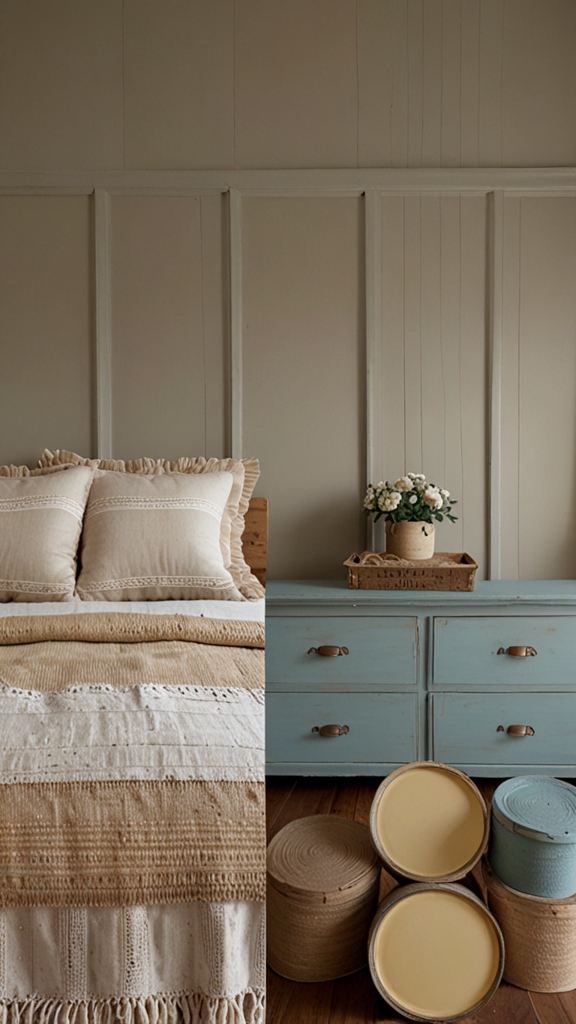
When looking to incorporate rustic accent colors into a farmhouse-inspired decor, consider these options:
- Earthy tones: Colors like terracotta, rust, olive green, and mustard yellow bring a warm and cozy feel to the space.
- Barn red: A classic farmhouse color, barn red can be used in small doses through accents like throw pillows, rugs, or artwork.
- Navy blue: Deep, rich hues like navy blue provide a sophisticated touch to a farmhouse color scheme and complement neutrals well.
- Soft pastels: Soft blush pink, muted sage green, or powder blue can add a subtle pop of color without overwhelming the neutral backdrop.
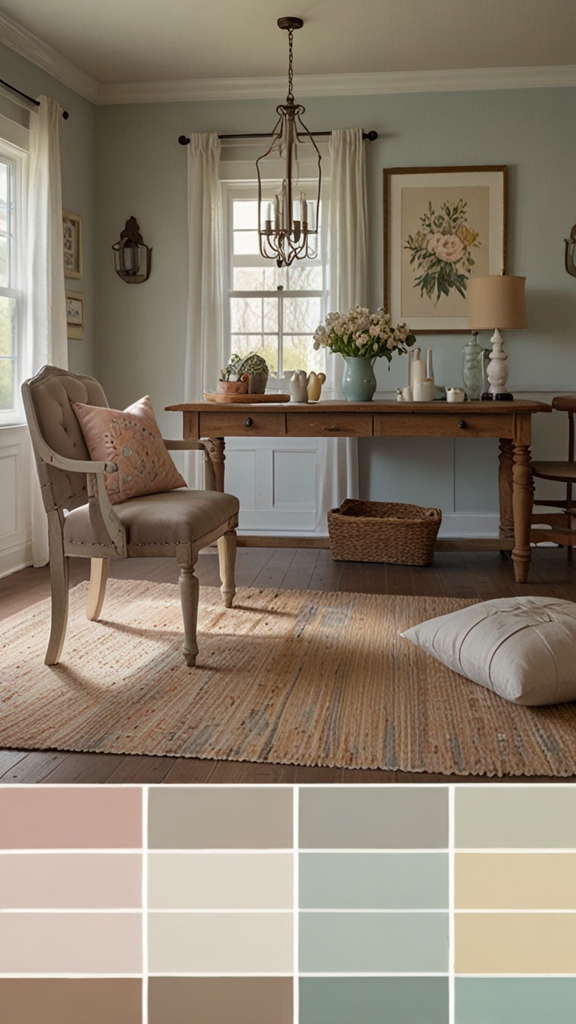
- Rustic metallics: Copper, bronze, and aged brass are metallic accents that bring a touch of warmth and elegance to a farmhouse-inspired decor.
- Weathered gray: Gray with a weathered or distressed finish can add a touch of urban farmhouse charm to the space.
Can I mix different patterns and textures in my farmhouse-inspired living room color scheme?

Mixing patterns and textures is a great way to add visual interest and depth to a farmhouse-inspired living room. Here’s how you can effectively combine them:
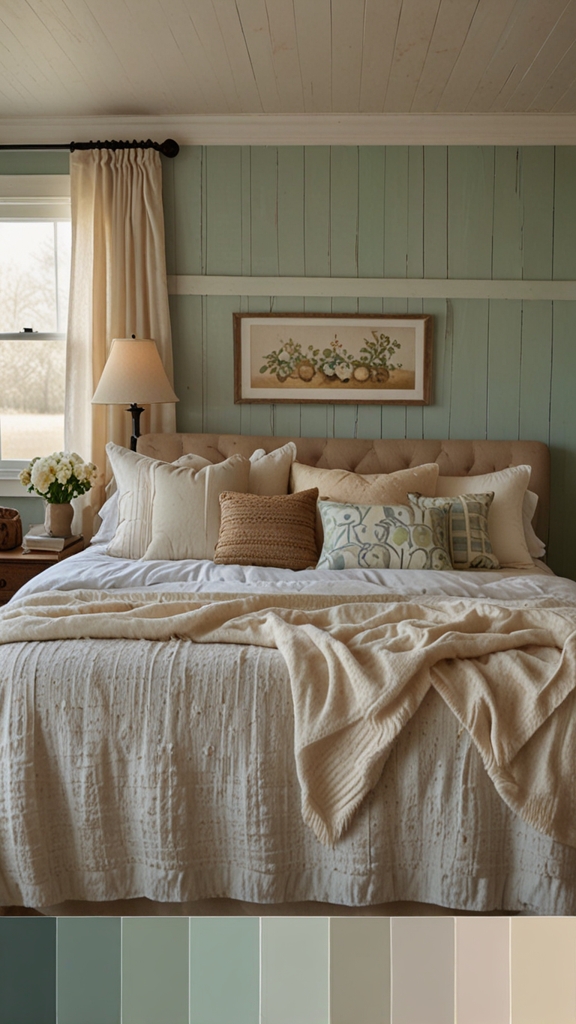
- Stick to a cohesive color palette: Choose patterns and textures that share similar color tones to ensure they complement each other harmoniously.
- Vary the scales: Mix large-scale patterns with smaller ones to create balance and prevent the space from feeling overwhelming.
- Balance bold with subtle: If you have a bold pattern, pair it with more subtle textures or prints to maintain a sense of equilibrium.
- Consider mixing materials: Incorporate different textures like quilts, wool rugs, linen curtains, and leather furniture to add depth and tactile appeal.
- Use solids as buffers: Intersperse solid-colored elements to break up patterns and create breathing space within your design.
- Experiment with different pattern types: Combine stripes, checks, florals, and geometrics in a thoughtful way to introduce variety without clashing.
What are some popular furniture colors for a farmhouse-inspired living room?
.

Choosing the right furniture colors is crucial in achieving a cohesive farmhouse-inspired living room. Here are some popular options:
- Weathered wood: Furniture pieces in natural, weathered wood tones like oak, pine, or reclaimed wood add a rustic and authentic farmhouse touch.
- White or cream: Opting for white or cream furniture creates a light and airy feel, particularly when paired with neutral walls and decor.
- Distressed finishes: Furniture with distressed finishes in shades of gray, blue, or green can bring a vintage and timeworn charm to the space.
- Black accents: Incorporating furniture pieces with black accents or details can provide a modern edge and contrast against lighter elements in the room.
- Mixed finishes: Embrace a mix of finishes like wood, metal, and upholstered pieces to create a curated and collected look that defines farmhouse style.

How can I add pops of color to a predominantly neutral farmhouse-inspired color scheme?
Adding pops of color to a predominantly neutral farmhouse-inspired color scheme can inject personality and vibrancy into the space. Here are some ways to do so:
- Accent textiles: Introduce colorful throw pillows, blankets, and rugs in shades like mustard yellow, deep red, or indigo to add visual interest.
- Artwork and decor: Display artwork or decorative objects in bold colors that complement the neutral backdrop and serve as focal points in the room.
- Upholstery and drapery: Opt for furniture pieces or drapery in a statement color to create a striking contrast against the neutral elements in the room.
- Statement furniture: Incorporate a single piece of furniture in a standout color, such as a jewel-toned accent chair or a vibrant cabinet, to draw attention.
- Natural elements: Use fresh or faux greenery, floral arrangements, or colorful ceramics to introduce pops of color inspired by nature.
Are there any specific paint colors that are commonly used in farmhouse-inspired living rooms?
Paint colors play a crucial role in setting the tone for a farmhouse-inspired living room. Here are some specific hues commonly used in this style:
- Soft whites: Shades like Alabaster, Swiss Coffee, or Simply White can create a fresh and bright backdrop that enhances natural light and the rustic elements in the room.
- Neutral grays: Colors like Agreeable Gray, Revere Pewter, or Worldly Gray offer a sophisticated and versatile choice that complements farmhouse decor beautifully.
- Warm beiges: Hues such as Accessible Beige, Balboa Mist, or Edgecomb Gray bring a cozy and inviting feel to the space without overpowering other elements.
- Pale blues and greens: Soft blues like Sea Salt or gray-greens like Sage Green can add a subtle hint of color while maintaining a serene and calming ambiance.
- Earthy tones: Rich browns like Urbane Bronze, forest greens like Moleskin, or deep blues like Hale Navy can create a grounded and earthy atmosphere in a farmhouse space.
How should I coordinate window treatments with the color scheme in a farmhouse-inspired living room?
Coordinating window treatments with the color scheme is essential to achieve a cohesive farmhouse-inspired living room. Here are some tips to help you:

- Neutral tones: Opt for window treatments in neutral colors like white, cream, beige, or gray to maintain a clean and timeless look that complements the farmhouse style.
- Natural materials: Choose window treatments made from natural materials like linen, cotton, or burlap to add texture and a touch of rustic charm to the room.
- Simple patterns: Consider subtle patterns like stripes, checks, or simple florals in muted tones to add visual interest without overpowering the space.
- Layering: Enhance the farmhouse aesthetic by layering different window treatments, such as woven shades with sheer curtains or linen panels with a valance.
- Contrasting accents: Use window treatments as an opportunity to introduce a pop of color or a contrasting texture that complements the overall color scheme in the room.
